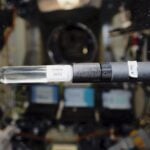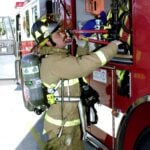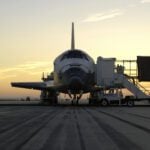Satellite Based Search-and-Rescue
Inducted In: 2014, Public Safety
In 1979, four countries came together to develop global approach to satellite based search-and-rescue. The United States, France, Canada and the Soviet Union agreed to jointly develop a worldwide system.
By 1985, that global system known as Cospas-Sarsat was fully operational. Since its inception, this satellite based system has rescued more than 32,000 people.
The first generation used low Earth orbits satellites to detect emergency signals and repeat them to ground stations where Doppler processing provided the signal location.
To further improve signal location accuracy NASA led an effort to create what became the Distress Alerting Satellite System which incorporates search and rescue instruments on GPS satellites in mid-Earth orbit. This new system embedded the GPS location in the signal itself, eliminating Doppler calculation for faster identification and rescue.
When a distress beacon signal is relayed by multiple MEO satellites to a ground station, time and frequency measurements calculate beacon location. Each beacon data burst is sufficient to provide an accurate location. Each additional data burst further refines location to improve rescue response time.
With each generation of Cospas-Sarsat technology, commercial partners have contributed hardware and technology to support development and ongoing operations.
Today some 41 countries participate in the operation and management of Cospas-Sarsat. This is a truly international effort with new ground stations and satellites continuously being added to provide a dependable redundancy and improved response to the over 1 million beacons in use worldwide.
Cospas-Sarsat, space technology saving lives on Earth.
Related Technologies

Bubble Detector
Inducted In: Featured, Health, Public Safety
Canada’s Bubble Technology Industries (BTI) created the Bubble Detector to detect and record levels of neutron radiation exposure to humans. The detector is a small vial about the size of your thumb. It is small enough and portable enough to…

Improved Firefighter’s Breathing System
Inducted In: Featured, Health, Public Safety
In the early 1970s, the Johnson Space Center (JSC) undertook to adapt and apply technology developed for portable life support used by Apollo astronauts on the moon in a significant effort to improve firefighter breathing systems. This effort was in…

Safety Grooving
Inducted In: Public Safety
In the 1960s, NASA's Langley Research Center initiated an extensive research program to develop a method to reduce the incidence of aircraft tire hydroplaning, a condition that occurs during rainstorms when tires rolling or sliding along water-covered pavement are lifted…
